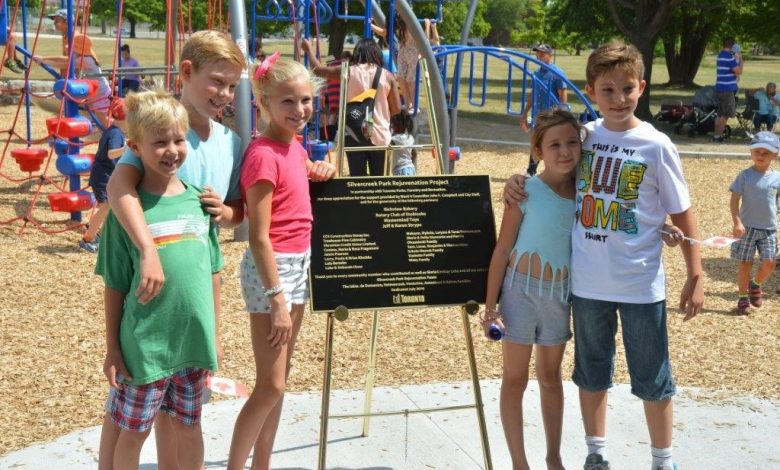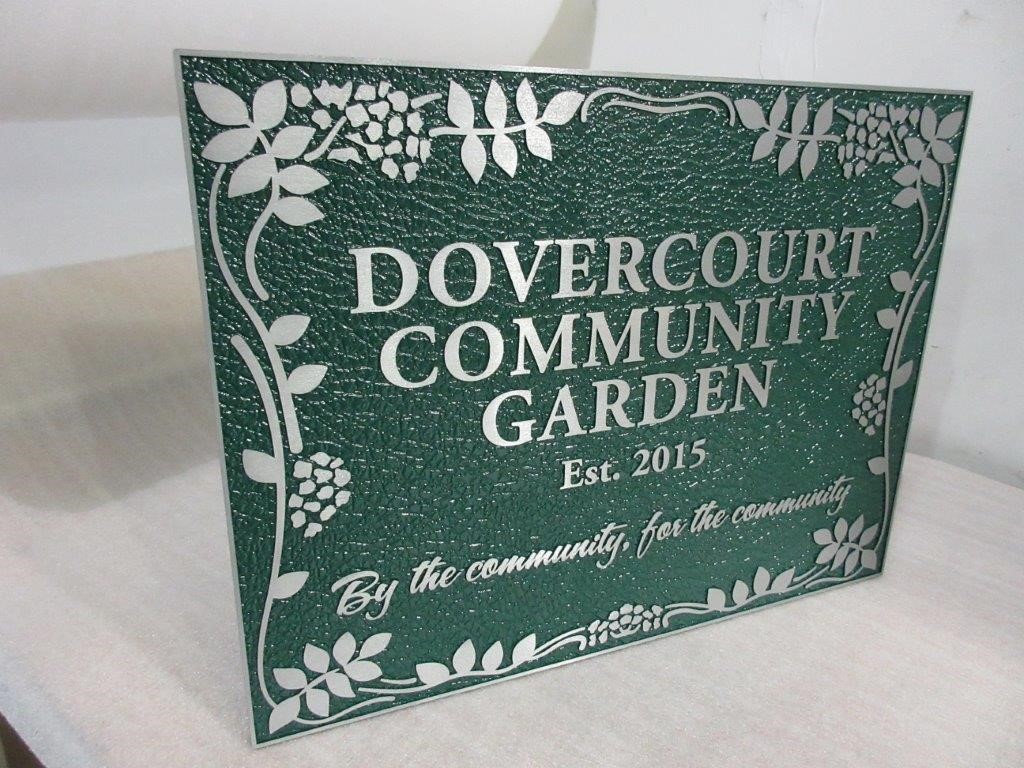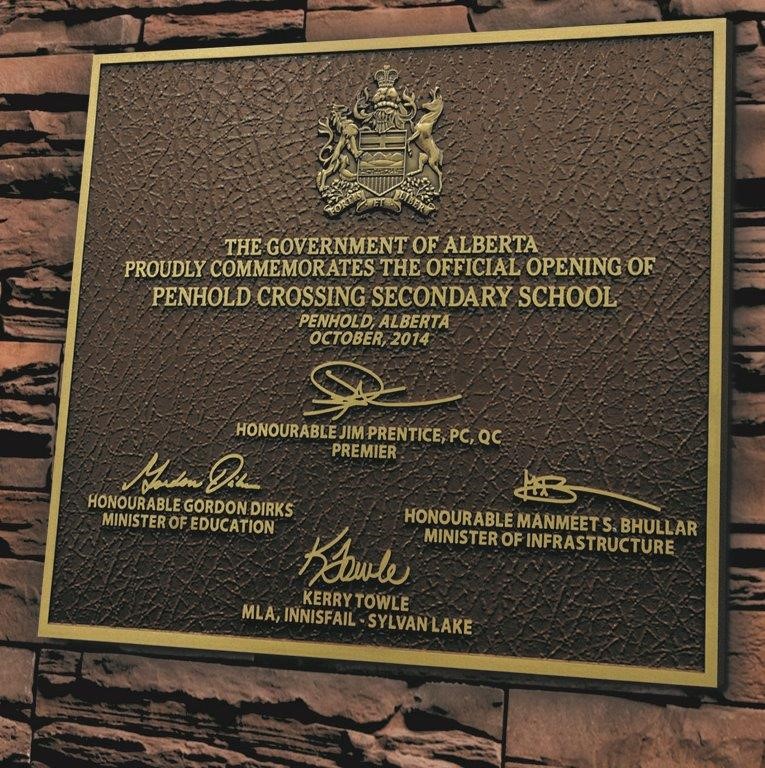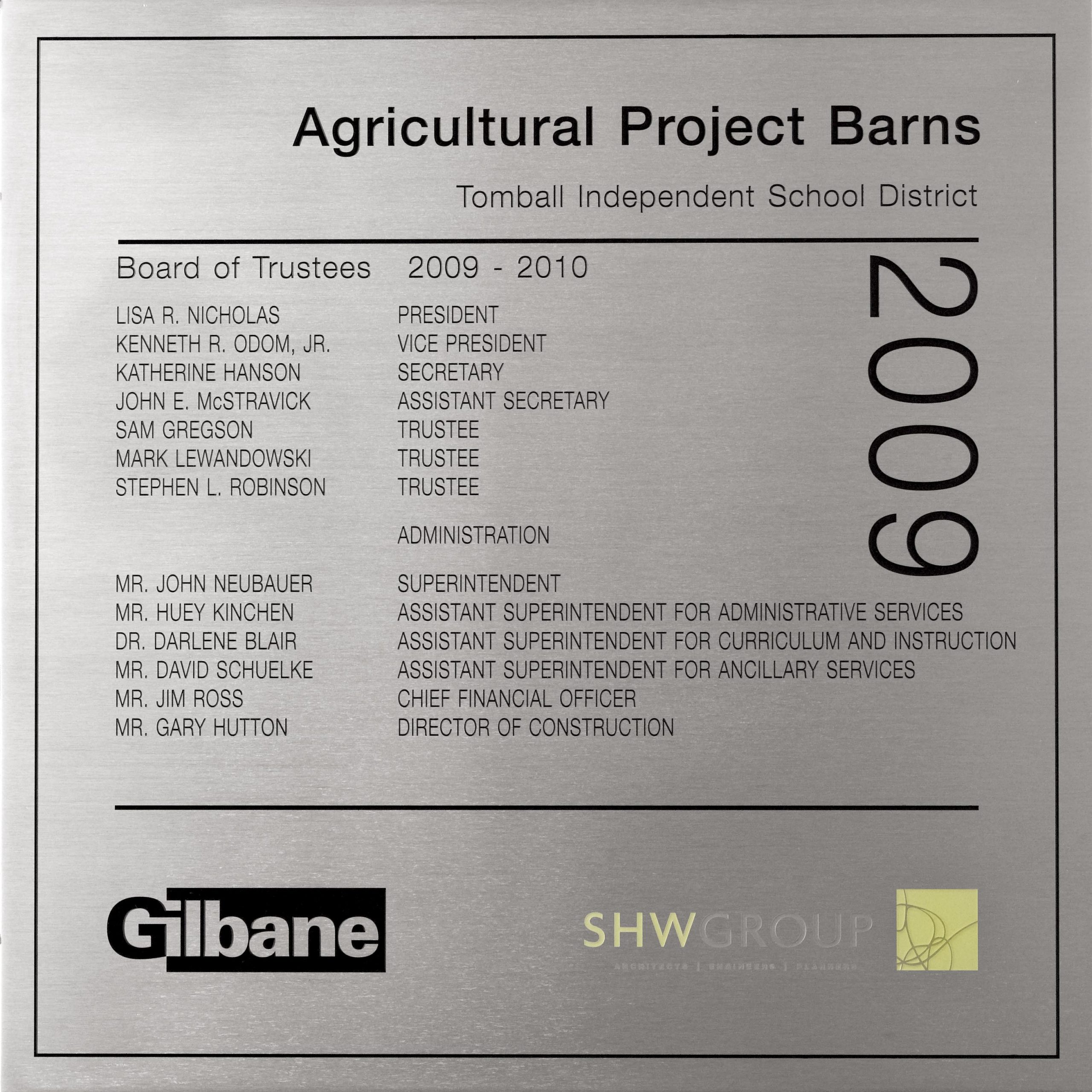Outdoor Recognition Plaques: Bronze and Beyond
Outdoor recognition plaques are a tried and true staple in the sign world, and probably always will be.
Outdoor plaques continue to gain in popularity, whether they are made from bronze, aluminum, copper or zinc. Bronze is still king when it comes to most outdoor recognition plaques, but other materials are starting to gain some traction in the marketplace.
Recognition and honorary applications have always been a big market for metal plaques, but you can see them everywhere these days, including professional buildings, as directory signs, official seals in government buildings or for commemorative purposes. Corporations are also using metal plaques to showcase their company brands.
“You see them everywhere,” says Ron Gatz, product manager for Gemini Inc.
How recognition plaques are made hasn’t changed much over the years. They are typically cast, etched or carved from metal and then painted and covered with a clear, protective finish.
Gemini uses aluminum and bronze, although bronze continues to be more popular.
“For whatever reason, people equate bronze with more permanence,” he says.
In the past, most memorial plaques were 12″ x 18″ rectangles. Now, however, they can be virtually any shape a client wants, with raised or recessed copy.
Gemini uses automotive-grade paints and finishes it that protect the metal and keep the bronze from naturally patina-ing.
Cast metal plaques are usually more expensive because they take longer to make. Precision tooled plaques take less time so they are a little cheaper but the quality is still good, Gatz says. “You get very sharp letters and so it is quicker, a very sharp plaque.”
At smaller sizes, most people would have a hard time telling whether the plaque was cast or precision tooled, he adds. The casting process is more versatile, however, allowing a plaque to have 3-dimensional bas-relief elements.
Rocky Fincher, sales manager at A.R.K. Ramos Foundry & Mfg. Co. Inc., says that 90% of the plaques his company makes are installed outdoors and are either made of cast bronze or cast aluminum. The company also makes them of cast brass or etched materials like stainless steel and brass aluminum.
He agrees that bronze is still the most common metal used to make recognition plaques.
“Those are popular because they give a historical appearance, a nice elegant look, and they are able to go totally custom. The way we create patterns is done in a digital format. Logos and photos, we can incorporate whatever they want on them,” Fincher says.
When a plaque is finished, A.R.K. Ramos seals the front back and sides with paint. Then the paint is sanded off the raised areas so that the plaque has a nice satin polish and then it is sealed with a clear coating that is used in the automotive and aeronautical industries.
“If nobody chips the clear coat finish, it will last and last and last,” he says.
Both Fincher and Gatz say that the easiest way to maintain the finish on a metal plaque is to clean it regularly with mild soap and water. If the clear coat develops a scratch, it can be sanded lightly. Car wax can help remove the deeper scratches.
It is also important to mount the finished plaques on materials that are weather-resistant, like granite, brick, stone or deck-grade materials that are impervious to moisture and weather conditions.
“One of the things people forget is, if they are putting it in an exterior setting, whatever they are mounting the sign onto should be material prepared and designed for exterior settings,” says Kathy Wilson, vice president of sales and marketing for Advance Corp. in Cottage Grove, Minn. “That if they are putting something behind there to raise it up or as a backer, if they use something that absorbs moisture or holds water or will shrink and contract with weather changes, they should probably think about that a bit more and spend more money to get an exterior grade backer or substrate that might be filler.”
If the backer is not weather-resistant, it is more likely to blister or get moldy which can compromise the plaque’s installation and make it easier for it to be stolen or vandalized. Wilson recommends that the backs of the plaques get cleaned often to check for potential damage.
Ken Auty, sales manager, North America, for FusionCast, says that many of the cast metal signs it manufactures are installed on posts that are sunk three feet deep into the ground and buried in concrete.
Many are mounted on masonry walls or other flat surfaces.
“When they are attached to a flat surface, they are pretty hard to remove,” says Auty. “They are pretty much vandal-proof.”
FusionCast makes its plaques out of engineered cast metal.
“It is the best product ever developed for outside use. It is timeless,” he says. “What we’ve done is taken bronze, copper and aluminum and mixed it with high-density urethane.”
After cold casting, you end up with a solid metal-faced sign with a high-density urethane core, which makes the plaques lighter and easier to move around and mount, but they will still last forever, he adds. The HD urethane FusionCast uses is the same material used in roller coaster wheels and golf balls.
“It is unique, and you can make it any shape, any size. You can make it 3D, 2D, add any color. It will still look fine in 20 to 30 years,” Auty says.
One of the things that makes cast metal more durable over the long-term is that the words are raised. Painted or sublimated signs will fade over time but even if the paint wears off of a cast metal sign, the letters are still raised up from the surface and legible, he adds.
Advance Corp.’s Wilson says that her company makes recognition plaques by chemically etching images on zinc. The process creates a dimensional piece that is precision cut with CNC routers and decorated with cutting edge ingredients, like Matthews Paint.
The metal itself is “very durable. It machines very nicely,” she says. The material can be machined to fit into any cavity or space perfectly so it is difficult to remove.
The etching uses a chemical bath to attack the metal and wash away or wear away the little chunks of metal. It is a closed loop system, Wilson says, meaning that once the hood goes down on the tank, the process moves forward without any interaction from outside the tank. It is all controlled with a touch screen. Once the process is complete, the bath is sent to the wastewater treatment facility in the basement which neutralizes the chemical agent, filters out the metals and reclaims the water for another chemical bath.
“It is really beautiful. A very clean process and very safe,” she says.
All of the measuring is done with computers now, which makes the process more precise.
Metal etching creates more detailed plaques than can be achieved with cast metal, Wilson says. It can create thinner lines and utilize serif fonts and photographs.
“It is beautiful. It fascinates me every day,” she adds.
Advance Corp. signs are used for markers at botanical gardens, golf courses, stadiums, donor recognition plaques and corporate brand signage. Point of purchase signage is also becoming more popular.
“The only thing hard to maintain is if the sign is put on a pedestal. There is an angle or area where water or residue will be standing still and it doesn’t run off and if you haven’t installed it to have a runoff, it will need a little bit of cleaning,” she says.












